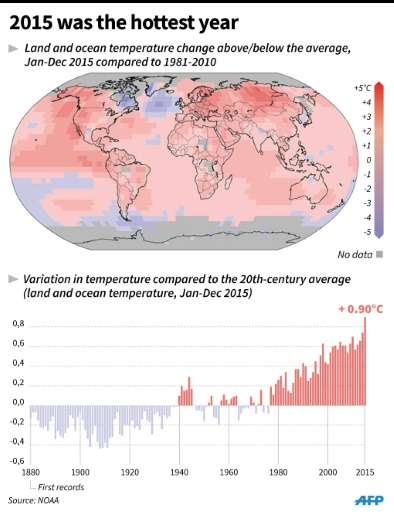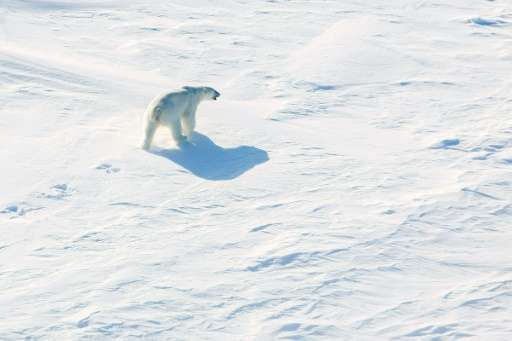US, Mediterranean face extreme warming: study

Once the world as a whole has warmed by two degrees Celsius, top temperatures in the United States and Mediterranean basin will have climbed by even more, according to a study released Wednesday.
A global 2C (3.6 Fahrenheit) rise above mid-19th century levels would mean a jump of at least 3.0C (5.4F) in maximum daytime temperatures in these regional hot spots—deep into the red zone of dire climate impacts, said the study.
Central Brazil can also look forward to a bigger-than-average increase, with summertime peaks rising by 3.5C.
Moreover, no matter how quickly humanity reduces the greenhouse gas emissions that drive warming, the gaps will remain just as big.
"These relationships hold true regardless of what emissions pathway you take," Sonia Seneviratne, a professor at ETH Zurich's Institute for Atmospheric and Climate Science, told AFP by phone.
"If our aim is to limit summer temperature extremes in the Mediterranean region, for example, to 2C, then the global temperature must rise no more than 1.4C."
The study, published in Nature, looked at projections in each region for the evolution of annual maximum and minimum daytime temperatures.
In 2010, the world's nations set a goal of capping average planet-wide warming to 2C, a hugely daunting task.

But a crescendo of extreme weather—US government scientists confirmed today that 2015 was "by far" the hottest year on record—and new studies suggest that even this ambitious goal may be inadequate.
A more recent global climate agreement, inked by 195 countries in Paris in December, set a new target of "well below 2C".
Earth has already heated up by nearly 1.0C. Scientist do not know when it might pierce the 2C cap, but many acknowledge that the chances of staying under it are not good.
Regional hot spots
There are several explanations for the gap between global averages and "hot spot" regions, Seneviratne explained.
One is the simple fact that temperatures above the oceans—which cover more than 70 percent of the planet's surface—are significantly cooler, bringing down the average.

Beyond that, however, there are local factors—the impact of parched soils, loss of heat-reflecting snow—that make some land areas even hotter.
The area facing the sharpest increase is the Arctic.
Once the thermometer for Earth's surface has gone up by 2C, the coldest temperatures registered in the realm of polar bears will have risen by three times as much, the study found.
Regional variations are well known, and have been minutely described in the benchmark reports of the UN's Intergovernmental Panel on Climate Change (IPCC).
"What will surprise climate scientist," said Seneviratne, "is that these outcomes are independent of how quickly we reduce greenhouse gases in the coming century."
Her research team based their calculations on existing climate models, as well as different projections on the rate at which CO2 concentrations in the atmosphere will increase.
Under both a so-called "business as usual" scenario of no further action to reduce emissions, or a more realistic middle-ground scenario, the fate of hot-spot regions—once Earth has reached the 2C benchmark—was the same.
The general public should be aware of these differences, the researchers said.
"For many people, two degrees doesn't sound like it's a lot, or that it would make much of a difference," Seneviratne said.
"But when you take regional variations into account, you realise that it is in fact a very big change."
More information: Allowable CO2 emissions based on regional and impact-related climate targets, DOI: 10.1038/nature16542
Journal information: Nature
© 2016 AFP




















